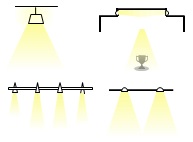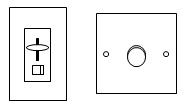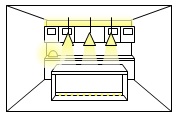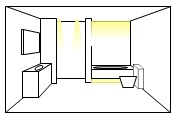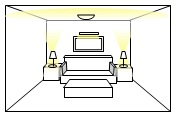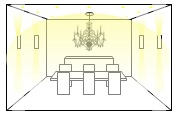- Home
- Lighting Design
- Lighting Control Systems
Lighting Control Systems
Another important lighting design technique is deciding how you will control your lighting scheme.
Lighting control systems can range from the humble switch to a wireless whole house control system. Let’s go through the options and ideas.
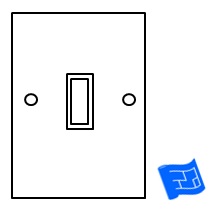
Lighting Control Systems - Light Switches
Switch Locations
If you plan to control your lighting with traditional switches, think carefully about the switch locations. The page on lighting symbols has more information on this and explains how to read lighting plans.
Switch Plate Layouts
If you use some of the ideas in the lighting design pages you’re likely to have a more elaborate scheme than just a ceiling light. For example a living room lighting scheme may contain several circuits:
- Ceiling light
- Shelf lights either side of the fireplace
- Floor recessed lights to highlight the fireplace
- Picture light above the fireplace
- Lamp circuit - I’m a great fan of a lamp circuit by the way. A lamp circuit allows you to control the power in power sockets (those associated with the lamp circuit) with the flick of a switch on the wall.
This living room arrangement would involve 5 switches. It makes sense to have them controllable from near the light source and near the entrance to the room. That means 5 switches on a plate near the entry. It’s worth spending some time to think about the layout of the switches so that it will be reasonably intuitive to figure out which light switch deals with which set of lights. You might consider grouping 3 switches together for the fireplace lighting (shelves, picture, floor) and the other grouping to deal with the ceiling and lamp circuit. Switch plates don’t tend to have labels. I once saw a light switch plate that had been engraved to say which light source each switch related to.
Dimmer Switches
Another thing that’s worth including in a switch lighting control system is dimmer switches, at least to some rooms. A dimmer switch allows you to control the amount of light coming from a fixture to suit the mood you’re trying to create.
There are three kinds of dimmer switch:
- Rotary dimmer – which has a knob that you push to turn the light on and off and turn to adjust the light level.
- Slide dimmer - which has a switch that you flick to turn the light on and off and a slider that you slide up and down to adjust the light level.
- Push button dimmer – which has a button which you press and release to turn the light on and off and push and hold to raise or lower the light level.
A lighting circuit can only have one rotary dimmer on a circuit, whereas several push button dimmers can be incorporated into a single lighting circuit. A push button dimmer might be a better choice for a bedroom where it would be desirable to be able to adjust the lighting level from both the entrance of the room and when lying in bed.
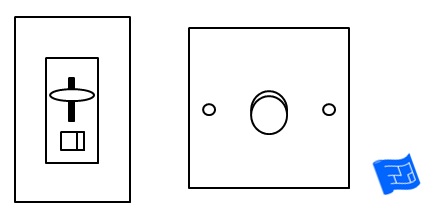 Slide dimmer and rotary dimmer switch
Slide dimmer and rotary dimmer switch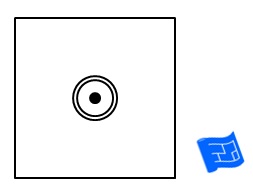 Push button dimmer switch
Push button dimmer switchTimers
Timers are very useful for setting up a lamp on a timer to come on and off at a pre-programmed time to act as a basic security system, giving the impression that someone is home. But why not consider using timers on some lamps or lighting circuits all the time. What could be more welcoming that having a soft light in the entrance already one when returning home from a hard day’s work?
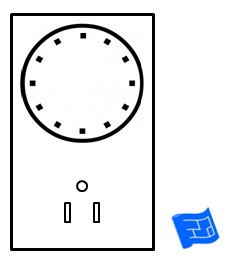 Plug timer for controlling lighting
Plug timer for controlling lightingMulti-Circuit Lighting Control Systems
So now we’re into the realm of control systems as opposed to control switches. You could choose to establish a control system for one or several rooms, or the entire home. Some of the control possibilities with control systems are:
- Pre-set lighting modes so rather than having 5 switches as in the living room example above, there could be 5 pre-set lighting moods set up, each using a different combination of the light sources available.
- Control systems that incorporate other household systems such as blinds and curtains, communications, temperature control and sound.
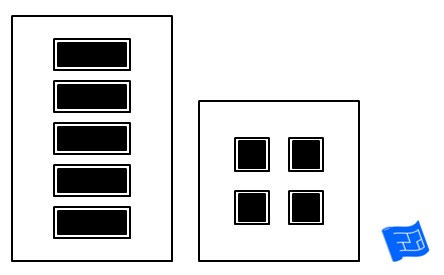 Multi-circuit lighting controls
Multi-circuit lighting controlsWired in or wireless
Lighting systems can be wired in or wireless. In a wired in system every lighting circuit (and perhaps circuits for other systems) in the home is wired back to a central computer which stores the instructions for lighting modes. The system is then controlled from wall panels, or perhaps from a remote control or wireless control, maybe even a smart phone app.
In wireless systems, the light fixtures themselves are wireless and communicate over a wireless protocol over the internet. These are typically controlled via a wireless control or smart phone app.
Energy Saving Controls
One way to save energy is by thinking about which light bulbs are used in your lighting scheme. The other way is to make sure light sources aren’t left on. There are a few ideas you can incorporate to try and avoid lights being left on.
Movement detector
A movement detector can be used to turn lights on when someone enters a room, and turn lights off after no movement is detected in the room after a certain amount of time. This arrangement can be useful in children’s rooms.
Infra-red detector
A passive infra-red detector (which detects heat) can be used to switch lights on when someone enters a room and then turn them off after a certain amount of time. This can work well in entrance spaces.
Photo-cell
A photo-cell (which detects light levels) can be used to make sure that external lighting is turned off during daylight hours.
Kill-all switch
A ‘kill all’ switch can be used to turn off many other circuits might be useful at the entrance so that all lights can be turned off by one switch if desired. In a conventionally wired home this would require quite a bit of extra wiring. With the more modern control systems it would be possible to control and change which lights were included in the ‘kill-all’ switch.
So that's all on lighting control systems from me. If you want to look in more depth at this topic the Lighting Controls Association website is worth a visit.
More Home Lighting Design for you...
You might also enjoy reading these other pages on home lighting design.

